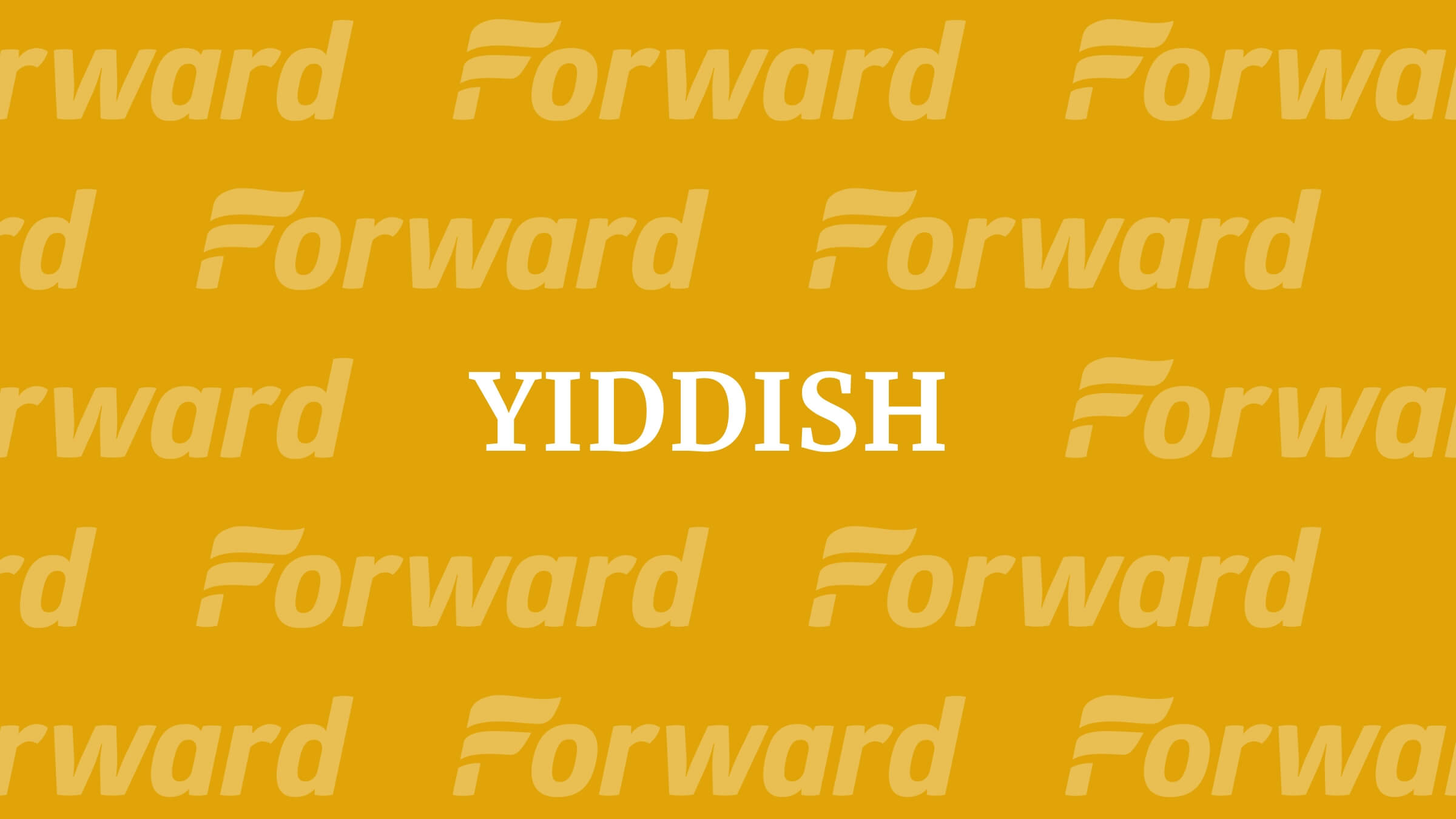India, A Little-Known Wartime Refuge for German-Speaking Jews

Graphic by Angelie Zaslavsky
This article originally appeared in the Yiddish Forverts.
New Delhi, India. – Most people know the compelling history of the Jews who escaped Hitler’s henchmen by going to Shanghai, but few know that India, too, provided refuge for a large number of Jews during World War II.
As Dr. Margit Franz, a historian at the University of Graz in Austria, has learned, at least 5,000 German-speaking Jews found refuge in India from 1933-1945. She presented her findings at a recent conference on India and the Jews held in New Delhi last month.
Counting the refugees was not an easy task — first of all, because not everyone identified himself as a Jewish refugee, and secondly, because India wasn’t a single country then. In addition to British India, there were many princely states. But through her research, Dr. Franz managed to track down many of those who came to India to find asylum.
Most of the refugees had exceptional skills, making it easier for them to obtain visas, particularly since the large Indian population had a high percentage of unskilled laborers. Certain Indian groups were unfriendly to Jews and actually tried to prevent the entry of Jewish refugees into India. When Jawaharlal Nehru, later to become India’s first Prime Minister, sponsored a resolution to welcome Jewish refugees “who could contribute to India’s progress”, an Indian freedom fighter, Subhash Chandra Bose, actively prevented it from passing.
Nehru and others fought hard to obtain the visas for Jewish refugees on humanitarian grounds even before the extent of the Holocaust had become known. In the end, though, the British decided who received visas and who didn’t since they ruled most of India at the time.
Shockingly, German Jewish refugees in India were often interned with German Nazis – and there were many of them in Bombay and Calcutta – in the same locations. Thus, Jews were put in the intolerable situation of sharing close quarters with their erstwhile tormentors. At the beginning of the war, in September 1939, all Germans, Jewish and non-Jewish, were considered enemy aliens. In October, the British finally set up a committee to distinguish between true refugees and Nazi spies, and by the end of the year, most refugees were released.
Women refugees were in a peculiar position in India. Most of them had special skills and could find jobs as housekeepers, tailors and teachers in countries like Britain, but there were few such jobs available in India, except in pockets of Bombay and Calcutta.
Several women did build successful careers. One woman, Lotte Eisenstaedt, worked for the Maharaja of Bikaner as a specialist on children’s welfare. Another set up a factory to manufacture bras, where she employed many people. This, too, wasn’t easy. When the war started, the British had shut down all German businesses, including the factories of large companies like Siemens, AGFA, Kores, Scholl and IG Farben, who mainly employed Nazis. After 1940, the British allowed legitimate refugees to restart their businesses.
Who were some of these German-speaking refugees?
Ernst Cohn-Wiener, who taught art history in Berlin until he was forced out by the Nazis in 1933, first went to England and then came to India, where he was appointed by the Maharaja of Baroda as the Director of the Baroda Museum and Picture Gallery. He was also the personal art consultant of the Maharaja from 1934-1939.
Otto Konigsberger, nephew of the famous physicist Max Born, was appointed chief architect and planner to Mysore State, India in 1939. Among his creations are the Town Hall in Bangalore and the town plan for the city of Bhubaneswar. After Indian Independence he became director of housing for the Indian Ministry of Health from 1948 to 1951.
An article in the May 2011 Journal of the Association of Jewish Refugees, recounts a seder that was organized in Bombay for the Jewish refugees. The author, Walter Bergwerk, is a Viennese Jew who was brought to Bombay on August 24, 1939, by his parents, nine days before war broke out. He notes that “there were several hundred German and Austrian Jews in India, many of whom had come some time earlier to fill senior medical, commercial or technical posts. Some of the established residents were quite prosperous and tried to help the more hard-pressed recent arrivals by forming the Jewish Relief Association.”
The seder was organized by Mr. Bergwerk’s father, but the local Baghdadi community seemed to have helped out a lot, with the seder being held in a Baghdadi school and the bill for the entire seder, including the wine being paid for by Sir Victor Sassoon, a prominent Baghdadi Jew.
Alfred Rosenfeld, who is commemorated with a memorial stone in the Chinchpokli Jewish cemetery in Mumbai, worked tirelessly to help the new Jewish refugees. He had emigrated to India from Germany before the war and was already a British citizen when war broke out. His son, Peter Roland, remembers that his father would ask Jewish refugees to be circumspect and recommend that they not speak any German, saying: ‘It would be better to speak only English,’ since many British persons in India were not too happy at the arrival of Jewish refugees.
One of the more striking descendants of German-speaking refugees that participated in the New Delhi conference is Dilsher Virk. With his light-colored eyes and imposing build, Virk cuts a fine figure. Dilsher is a Punjabi name meaning “lion-hearted.” His mother, Hermine Speck (later known as Mady Martyn after her second marriage), was born to a Jewish mother and Catholic father. After her father‘s early death, she grew up in a small mountain village south of Salzburg, where her mother ran a kurhaus, i.e. a spa house. When Mady was 17 years old, a dashing Punjabi engineer, Sardar Bahadur Uttam Singh, came to the village and they fell in love. Reluctantly her mother gave her permission to marry him and in 1935, the couple settled in north India, in the foothills of the Himalayas. Hermine and her mother, Helene, came along with them, thinking that if things didn’t work out, they could always go back to Austria. But when Hermine’s brother was sent to Dachau in 1938 and later perished in Buchenwald, there was no question of returning to Austria.
Although Hermine was halachically Jewish, she was brought up in the Catholic faith of her father and never thought of herself as Jewish nor did she practice any Jewish customs. She was not a strict Catholic, however, and had no aversion later in life to going to a Hindu temple or a Sikh gurdwara. She spoke German and French, but the language at home was English. She did help Dilsher learn German and he eventually moved to Vienna. He is now a software engineer in Canada, where he lives with his wife and children.
Although many of the refugees left India after the war, their previous home countries, Austria and Germany, were often not eager to take them back. As a consequence, some did stay in their new host countries, and married Indians. The descendants of these refugees are fully acculturated Indians today, but for those who have expressed interest in uncovering more about their family‘s past, Dr. Franz‘s research should be an immense help.
















